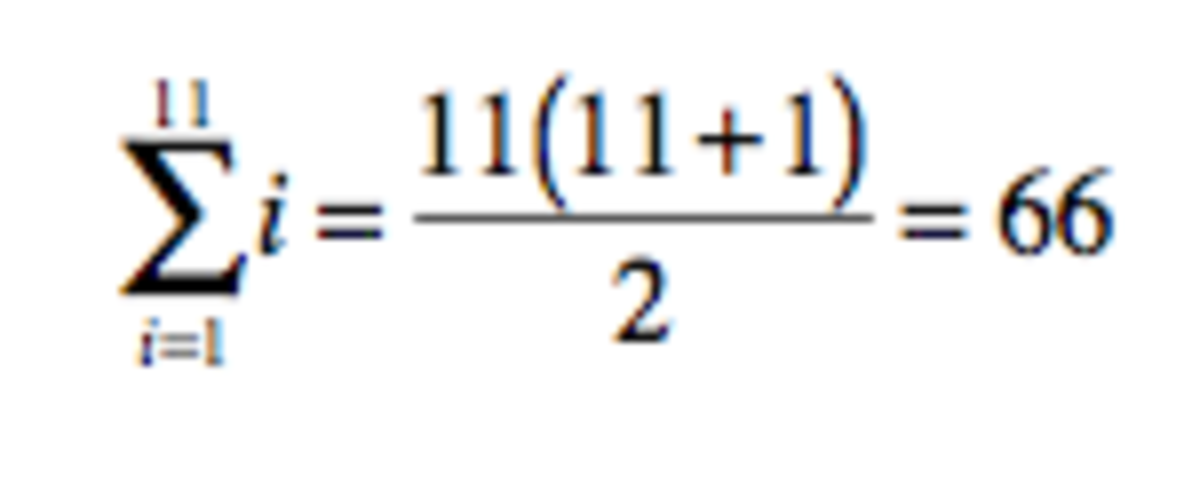Ambiguous Time
There is an 12-hour analog clock on which the hour and minute hands are identical.
How many positions ("ambi-time" pairs) will the time on this clock be ambiguous?
Note: Count each once, that is do not count an AM position as different than its equivalent PM position.
Hint: This interactive clock website is helpful. Or find an old analog clock to play with, and then try setting the time at a bit after 1:20...
The answer is 66.
This section requires Javascript.
You are seeing this because something didn't load right. We suggest you, (a) try
refreshing the page, (b) enabling javascript if it is disabled on your browser and,
finally, (c)
loading the
non-javascript version of this page
. We're sorry about the hassle.

If the hour hand makes a clockwise angle of h ∘ with 1 2 o'clock, and the minute hand makes a clockwise angle of m ∘ with 1 2 o'clock, then 0 ≤ h , m < 3 6 0 , and a valid time is shown when 3 0 h = H + 3 6 0 m where H is an integer between 0 and 1 1 inclusive (the time is somewhere between H o'clock and H + 1 o'clock). Note that H = ⌊ 3 0 h ⌋ , and that m is fully determined by h . We want to know the number of values 0 ≤ h < 3 6 0 which give rise to ambiguous time pairs ( h , m ) .
A time pair ( h , m ) may be ambiguous if the pair ( m , h ) is also a valid time pair. Thus ( h , m ) is a valid, but ambiguous, time pair if there exist integers 0 ≤ H , M ≤ 1 1 such that 1 2 h − m = 3 6 0 H 1 2 m − h = 3 6 0 M and hence h = 1 4 3 3 6 0 ( 1 2 H + M ) m = 1 4 3 3 6 0 ( 1 2 M + H ) If H , M , H 1 , M 1 are integers between 0 and 1 1 with 1 2 H + M = 1 2 H 1 + M 1 , then 1 2 ( H − H 1 ) = M 1 − M , and so 1 2 divides M 1 − M . Since − 1 1 ≤ M 1 − M ≤ 1 1 , we deduce that M = M 1 , and hence H = H 1 .
Thus there is an hour angle h with a corresponding minute angle that represents a valid, but possibly ambiguous, time when h is of the form h = 1 4 3 3 6 0 ( 1 2 H + M ) H , M ∈ { 0 , 1 , 2 , . . . , 1 1 } and distinct pairs of integers H , M give distinct values of h .
However, this time will not be ambiguous if H = M , since then the same time is being indicated in both positions. Thus there are truly ambiguous times precisely when H = M . This means that there are 1 1 × 1 2 = 1 3 2 times in a 1 2 -hour period when the time is ambiguous. This means that there are 6 6 hand positions in a 1 2 -hour period which are ambiguous (with each position of the hands indicating two possible times).